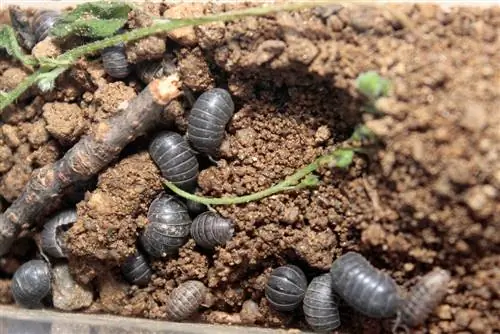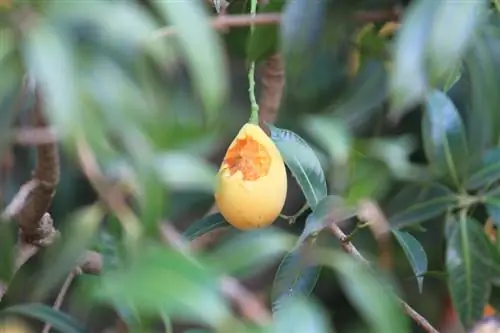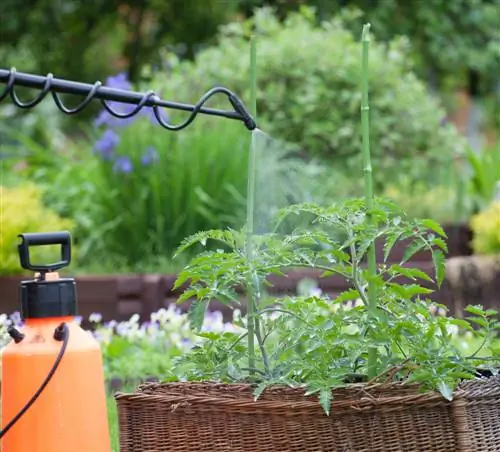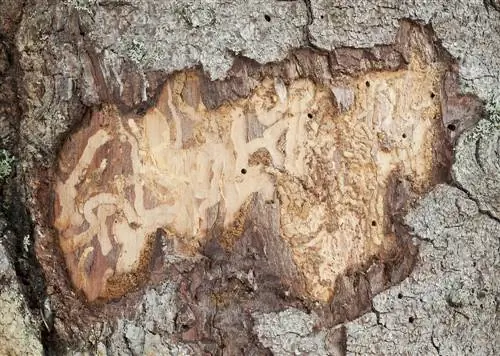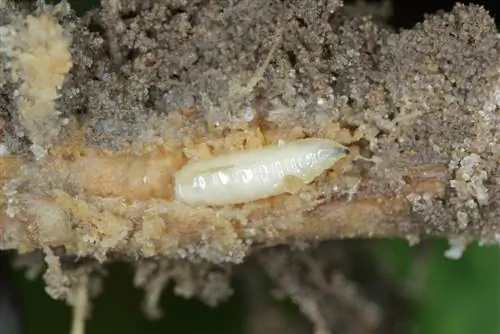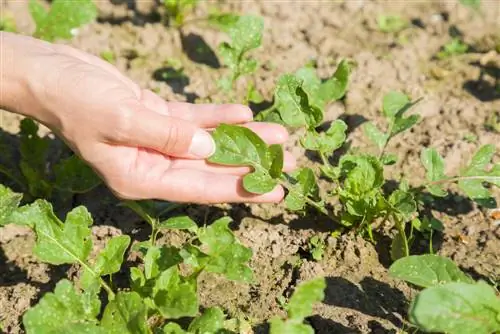- Author admin [email protected].
- Public 2024-01-10 23:11.
- Last modified 2025-01-23 11:22.
Potting soil is the preferred habitat of various pests. Among other things, whitish-gray animals can nest, usually springtails or root lice. The guests should be de alt with immediately to avoid damage to the plant.

What are little gray animals in the potting soil?
Small gray animals such as springtails, root lice, woodlice and fungus gnat larvae can occur in potting soil. These pests can damage plants and should be controlled by moving, draining or using natural means.
Pest infestation of potted plants
If your potting soil is full of creepy crawlies, it's time to take appropriate pest control measures immediately. It is an advantage if you know what soft animals you are dealing with. Among others, the following gray/whitish animals often appear:
- Springtails
- Root lice
- woodlice
- Sickness Gnat Larvae
Springtails
They are annoying little gray and white animals that jump around on the ground but do not endanger the plant. A diving bath drives away the jumpers. The procedure may need to be performed more frequently. Since the springtails avoid dry soil, watering sparingly helps.
Root lice
They damage the plant in the root area by sucking the plant sap. Just like aphids, root lice excrete drops of honeydew and thus attract ants. To combat it, pour tansy broth or wormwood tea. However, it can also be repotted in fresh soil, which should always be loose and moist, as the lice prefer dry and compacted soil.
woodlice
These are gray crustaceans that prefer a dark and moist habitat. They eat leaves and roots. Over a longer period of time, this leads to the death of the plant in the flower pot. Since woodlice are basically farm animals, they feed on dead plant material and contribute to the formation of humus, you should avoid combating them with chemical agents. With different baits, e.g. B. a hollowed-out potato, the animals can be attracted overnight and released in the garden in the morning.
Sickness Gnat Larvae
These pests are widespread and always appear in large numbers. They love moist soil and bite into plant roots. The infected plant loses its buds and the leaves wither. In addition to various insecticides, which you should only use in an emergency, there are home remedies available to combat it. The easiest way is to repot the plant and carefully wash off all the roots. If there is a severe infestation, the use of tobacco has proven to be effective. This is incorporated into the potting soil and then watered generously. The procedure should be carried out over a week.

